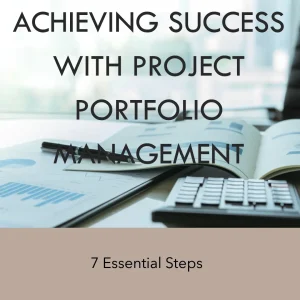Introduction
Effective tracking and documentation are crucial for ensuring that projects stay on course and meet their objectives. One of the essential tools in this process is the project log.
- Definition and Role: Project logging refers to the systematic recording of all relevant information related to a project, including progress updates, decisions made, issues encountered, and changes implemented. This log serves as a comprehensive record that helps project managers monitor the project’s trajectory, assess performance against goals, and make informed decisions as the project evolves. By maintaining a detailed project log, managers can identify trends, track milestones, and ensure that all team members are aligned with the project’s objectives.
- Significance for Accountability and Transparency: Maintaining a project log is not just about tracking progress; it also plays a vital role in fostering accountability and transparency within the project team. A well-documented log provides a clear reference point for all stakeholders, ensuring that everyone is aware of the project’s status and any challenges that may arise. This transparency helps build trust among team members and stakeholders, as it allows for open communication and facilitates discussions around project performance and necessary adjustments.
- Common Pitfalls in Project Logging: Despite its importance, many project managers encounter pitfalls when it comes to logging. These can include inconsistent updates, lack of detail, or failure to involve all relevant team members in the logging process. Such oversights can lead to miscommunication, a lack of accountability, and ultimately, project delays or failures. In the following sections, we will explore these common pitfalls in greater detail and provide strategies for avoiding them, ensuring that your project logging practices contribute positively to your project’s success.
By understanding the significance of project logging and being aware of the common mistakes that can occur, project managers and new professionals can enhance their project management practices and drive their projects toward successful outcomes.
Pitfall 1: Inconsistent Logging Practices
Maintaining a consistent logging practice is crucial for effective tracking and communication. Inconsistent logging can manifest in various ways, including:
- Varying Formats: Different team members may use different formats for logging project updates, leading to confusion and difficulty in comparing data. For instance, one team member might log updates in bullet points while another uses paragraphs, making it challenging to synthesize information quickly.
- Missing Entries: Inconsistent logging often results in incomplete records, where critical updates or decisions are not documented. This can create gaps in the project timeline, making it difficult to understand the project’s progression or to identify when specific issues arose.
The consequences of inconsistent logging can be significant:
- Impact on Project Tracking: When logs are inconsistent, it becomes challenging to track project milestones and deliverables accurately. This can lead to missed deadlines and a lack of accountability among team members, ultimately jeopardizing the project’s success.
- Stakeholder Communication: Inconsistent logs can hinder effective communication with stakeholders. When project updates are unclear or incomplete, stakeholders may become frustrated or lose confidence in the project management process. This can lead to misunderstandings about project status and expectations.
To establish a standardized logging process and mitigate these issues, consider the following tips:
- Adopt a Unified Logging Framework: Implement a consistent logging framework across the project team. This could involve using specific tools or software that enforce a uniform format for all entries, such as SLF4J, Log4j, or Logback. A standardized format helps ensure that all team members are on the same page and can easily interpret logs.
- Create a Logging Template: Develop a logging template that outlines the required fields and format for each entry. This template should include sections for date, time, project phase, updates, and any relevant notes. Providing a clear structure can help team members log information consistently.
- Regularly Review Logging Practices: Periodically assess the logging practices in place to ensure they remain effective and relevant as the project evolves. This review can help identify any inconsistencies and allow for adjustments to be made as needed, ensuring that logging practices align with project objectives and stakeholder needs.
By addressing the issue of inconsistent logging practices, project managers can enhance project tracking, improve stakeholder communication, and ultimately contribute to the overall success of their projects.
Pitfall 2: Lack of Detail in Entries
In project management, maintaining a comprehensive project log is crucial for tracking progress, facilitating communication, and ensuring accountability. However, one of the most common pitfalls encountered is the lack of detail in log entries. This section will explore the implications of vague entries, provide examples of effective logging practices, and suggest strategies to encourage team members to contribute meaningful details.
The Consequences of Vague Entries
Vague entries in a project log can lead to significant misunderstandings and miscommunication among team members. When details are sparse, it becomes challenging to ascertain the context of decisions made, the rationale behind actions taken, or the status of specific tasks. This ambiguity can result in:
- Misalignment of Goals: Team members may interpret vague entries differently, leading to divergent understandings of project objectives and priorities.
- Increased Errors: Without clear documentation, the likelihood of mistakes increases, as team members may not have the necessary information to execute their tasks effectively.
- Delayed Progress: When questions arise due to unclear entries, time is wasted seeking clarification instead of moving forward with the project.
Examples of Detailed Log Entries
To avoid the pitfalls associated with vague logging, it is essential to understand what constitutes a detailed log entry. Here are some examples of effective logging practices:
- Specific Dates: Instead of writing “Meeting held,” a detailed entry would state, “Meeting held on January 5, 2025, to discuss project milestones.”
- Responsibilities: Rather than noting “Tasks assigned,” a more informative entry would read, “John Doe assigned to complete the budget analysis by January 12, 2025.”
- Outcomes: Instead of simply stating “Issues discussed,” a detailed entry would specify, “Discussed the delay in deliverables due to resource allocation issues; agreed to reassign tasks to meet deadlines.”
These detailed entries not only provide clarity but also serve as a valuable reference for future project phases.
Strategies for Encouraging Meaningful Details
To foster a culture of detailed logging among team members, project managers can implement several strategies:
- Training and Guidelines: Provide training sessions that emphasize the importance of detailed entries and offer guidelines on how to write them effectively. This can include examples and templates to follow.
- Regular Reviews: Schedule regular reviews of the project log during team meetings. Highlight the importance of detail and recognize team members who consistently provide thorough entries.
- Incentivize Contributions: Consider implementing a reward system for team members who consistently contribute detailed and meaningful log entries. This can motivate others to follow suit.
- Lead by Example: Project managers should model the behavior they wish to see. By consistently making detailed entries themselves, they set a standard for the team to emulate.
By addressing the lack of detail in project log entries, project managers can significantly enhance communication, reduce misunderstandings, and improve overall project outcomes. Emphasizing the importance of thorough documentation will not only benefit the current project but also serve as a valuable resource for future initiatives.
Pitfall 3: Neglecting to Update the Log Regularly
Maintaining an accurate and up-to-date project log is crucial for the success of any initiative. However, one of the most common pitfalls encountered by project managers and new professionals alike is the neglect of regular updates to these logs. This oversight can lead to significant risks and challenges that can derail a project.
Risks of Outdated Information in Project Logs
- Informed Decision-Making: When project logs are not updated regularly, decisions may be made based on outdated information. This can result in misaligned strategies, ineffective resource allocation, and ultimately, project failure. For instance, if a project manager relies on old data to assess project progress, they may overlook critical issues that have arisen since the last update, leading to misguided actions and wasted resources.
- Communication Breakdown: Outdated logs can create a disconnect among team members. If some team members are working with the latest information while others are not, it can lead to confusion, duplicated efforts, or conflicting actions. This lack of synchronization can hinder collaboration and reduce overall project efficiency.
- Increased Risk of Scope Creep: Without regular updates, project scope may inadvertently expand as new tasks or changes are introduced without proper documentation. This can lead to scope creep, where the project becomes unmanageable and exceeds its original objectives, timelines, and budgets.
Best Practices for Setting Reminders or Schedules for Log Updates
To mitigate the risks associated with outdated project logs, project managers should implement best practices for regular updates:
- Establish a Routine: Set a specific schedule for log updates, such as daily or weekly reviews. This routine ensures that all team members are aware of when updates are expected and can prepare accordingly.
- Utilize Technology: Leverage project management tools that offer reminder features. Many software solutions allow users to set notifications for log updates, ensuring that team members are prompted to review and update the log regularly.
- Integrate Updates into Meetings: Incorporate log updates into regular team meetings. This not only reinforces the importance of maintaining current logs but also provides an opportunity for team members to discuss any changes or challenges that may need to be documented.
Encouraging a Culture of Regular Communication
Fostering a culture of open communication is essential for keeping project logs current:
- Promote Transparency: Encourage team members to share updates and insights regularly. This can be facilitated through collaborative platforms where team members can easily contribute to the project log.
- Recognize Contributions: Acknowledge and reward team members who consistently update the project log. This recognition can motivate others to prioritize log maintenance and contribute to a culture of accountability.
- Provide Training: Offer training sessions on the importance of project logging and how to effectively maintain logs. Educating team members on the impact of timely updates can enhance their commitment to this critical aspect of project management.
By addressing the pitfall of neglecting to update project logs regularly, project managers can significantly improve decision-making, enhance team communication, and reduce the risk of project failure. Emphasizing the importance of timely updates and fostering a culture of regular communication will ultimately lead to more successful project outcomes.
Pitfall 4: Failing to Use Technology Effectively
The effective use of technology is crucial for maintaining accurate project logs. However, many project managers and new professionals often fall into the trap of underutilizing the tools available to them. This section will explore common tools for project logging, the pitfalls associated with their improper use, and tips for selecting and effectively utilizing these tools.
Common Tools and Software for Project Logging
Project managers have access to a variety of tools designed to facilitate project logging. Some of the most commonly used software includes:
- Trello: A visual tool that allows teams to organize tasks and track progress through boards and cards.
- Asana: A project management platform that helps teams plan, organize, and track work in a collaborative environment.
- Jira: Primarily used in software development, Jira helps teams log issues, track progress, and manage agile projects.
- Microsoft Project: A comprehensive project management software that provides tools for scheduling, resource allocation, and progress tracking.
- Monday.com: A flexible platform that allows teams to customize workflows and log project details in real-time.
Pitfalls of Not Utilizing Tools to Their Full Potential
Failing to leverage these tools effectively can lead to several pitfalls:
- Manual Logging: Relying on manual logging methods can result in inaccuracies and inconsistencies in project data. This often leads to miscommunication among team members and can hinder decision-making processes.
- Ignoring Analytics: Many project management tools come equipped with analytics features that provide valuable insights into project performance. Ignoring these analytics means missing out on opportunities to identify trends, assess risks, and make informed adjustments to project plans.
- Inadequate Training: Without proper training on how to use these tools, team members may struggle to utilize them effectively, leading to underperformance and frustration.
Tips for Selecting and Effectively Using Project Management Tools for Logging
To avoid the pitfalls associated with ineffective use of technology, consider the following tips:
- Choose the Right Tool: Assess the specific needs of your project and team before selecting a logging tool. Consider factors such as team size, project complexity, and required features. A tool that works well for one project may not be suitable for another.
- Invest in Training: Ensure that all team members receive adequate training on how to use the chosen tools. This can include formal training sessions, online tutorials, or hands-on workshops to familiarize the team with the software.
- Encourage Regular Use: Foster a culture of consistent logging by encouraging team members to update project logs regularly. This can be facilitated through reminders, scheduled check-ins, or integrating logging into daily routines.
- Utilize Analytics Features: Make it a priority to regularly review the analytics provided by your project management tools. Use these insights to identify areas for improvement, track progress, and make data-driven decisions.
- Seek Feedback: Regularly solicit feedback from team members about the tools being used. This can help identify any challenges they face and provide opportunities for improvement in how the tools are utilized.
By addressing the common pitfalls associated with project logging technology, project managers can enhance their logging practices, leading to improved project outcomes and more effective management overall.
Pitfall 5: Ignoring Lessons Learned
The practice of documenting lessons learned is often overlooked, yet it is a critical component that can significantly influence the success of future projects. Ignoring this aspect not only hampers the growth of project teams but also leads to the repetition of past mistakes. Here’s a closer look at the importance of documenting lessons learned, the consequences of neglecting this practice, and a framework for effectively integrating these insights into your project log.
Importance of Documenting Lessons Learned
Documenting lessons learned serves as a vital knowledge base that can enhance project management practices. By capturing insights from both successful and failed projects, organizations can:
- Mitigate Risks: Understanding what went wrong in previous projects allows teams to anticipate potential pitfalls and develop strategies to avoid them in the future. This proactive approach can lead to better risk management and project outcomes [8].
- Enhance Future Performance: Analyzing successful projects helps identify key factors that contributed to their success, enabling project managers to replicate these strategies in future endeavors [4].
- Create a Knowledge Repository: A well-maintained repository of lessons learned ensures that valuable insights are easily accessible for reference, preventing the loss of critical information over time [7].
Consequences of Neglecting Lessons Learned
When project teams fail to document lessons learned, they risk encountering several negative outcomes:
- Repeated Mistakes: Without a record of past errors, teams are likely to make the same mistakes in future projects, leading to wasted resources and time [15]. This cycle of repetition can severely impact project profitability and overall success.
- Lack of Continuous Improvement: Neglecting to capture lessons learned stifles the opportunity for growth and improvement within the organization. Teams miss out on valuable insights that could inform better practices and decision-making processes [1].
- Poor Stakeholder Communication: When lessons learned are not shared among team members, it can create a disconnect in understanding project goals and expectations, ultimately affecting project delivery [2].
Framework for Integrating Lessons Learned into the Project Log
To effectively incorporate lessons learned into your project log, consider the following framework:
- Identify: At the end of each project phase, gather the team to discuss what went well and what did not. Encourage open dialogue to ensure all perspectives are considered.
- Document: Create a structured format for recording lessons learned. This should include details such as the context of the lesson, the specific issue encountered, and the resolution or strategy that was implemented.
- Analyze: Review the documented lessons to identify patterns or recurring issues. This analysis can help in understanding the root causes of problems and in developing strategies to address them in future projects [4].
- Store: Maintain a centralized repository where all lessons learned are stored. This should be easily accessible to all team members and updated regularly to reflect new insights [7].
- Retrieve and Apply: Encourage project teams to refer to the lessons learned repository at the start of new projects. Actively applying these insights can help in avoiding past mistakes and improving project outcomes [8].
By recognizing the importance of documenting lessons learned and implementing a structured approach to integrate them into project logs, project managers can significantly enhance their effectiveness and contribute to the overall success of their organizations.
Conclusion
Maintaining an effective project log is crucial for tracking progress, managing resources, and ensuring successful outcomes. However, several common pitfalls can hinder the effectiveness of project logging. Here’s a recap of the key pitfalls discussed:
- Lack of Clear Objectives: Failing to define clear goals can lead to confusion and miscommunication, making it difficult to maintain an accurate project log [4][7].
- Inadequate Communication: Poor communication among team members can result in missed updates and incomplete logs, which can compromise project integrity [5][7].
- Scope Creep: Allowing uncontrolled changes to the project scope can complicate logging efforts, as it becomes challenging to track what has been completed versus what has been added [2][9].
- Neglecting Regular Updates: Failing to update the project log regularly can lead to outdated information, making it difficult to assess project status and make informed decisions [11][12].
These pitfalls not only affect the accuracy of project logs but can also lead to broader project failures, such as budget overruns and missed deadlines [12][15].
As project managers and new professionals, it is essential to regularly review your current logging practices. Consider implementing structured logging processes, ensuring that all team members are trained on the importance of accurate and timely updates. This proactive approach can significantly enhance the quality of your project logs and, consequently, the success of your projects.
Find out more about Shaun Stoltz https://www.shaunstoltz.com/about/.
This post was written by an AI and reviewed/edited by a human.



